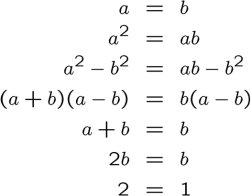
Let's start by recognizing that you have two options for each question. You can either get the answer right, or wrong. For our binomial, we will use R for getting the answer right and W for getting the answer wrong. Since there are 5 questions, we will raise the binomial to the 5th power, and the expansion will look something like this:
(R+W)5=R5+5R4W+10R3W2+10R2W3+5RW4+W5
Now to find the probability of getting exactly 3 questions right (R), strictly by guessing, we look at the term with R3. So the term 10R3W2 is what we're looking at. We also know that in a question with four possible solutions, there's a 25% chance of guessing the right answer, and a 75% chance of guessing the wrong answer. So we put 0.25 in for R, and 0.75 in for W. Instead of having 10R3W2, we now have 10(0.25)3(0.75)2. Simplifying this, we get 10(0.015625)(0.5625). Simplifying it one more time gives us 0.087890625. Changing this to a percent, we end up with 8.7890625%.
So what's the conclusion? Well the question was what percent chance is there that you'll get exactly 3 of the bonus questions right if you guess on all 5? The answer is about 8.79%.
Now for those of you who don't care about the percent chance of this, are completely confused, have fallen asleep of boredom, or are just reading because you have to, I'll leave you with this:

No comments:
Post a Comment